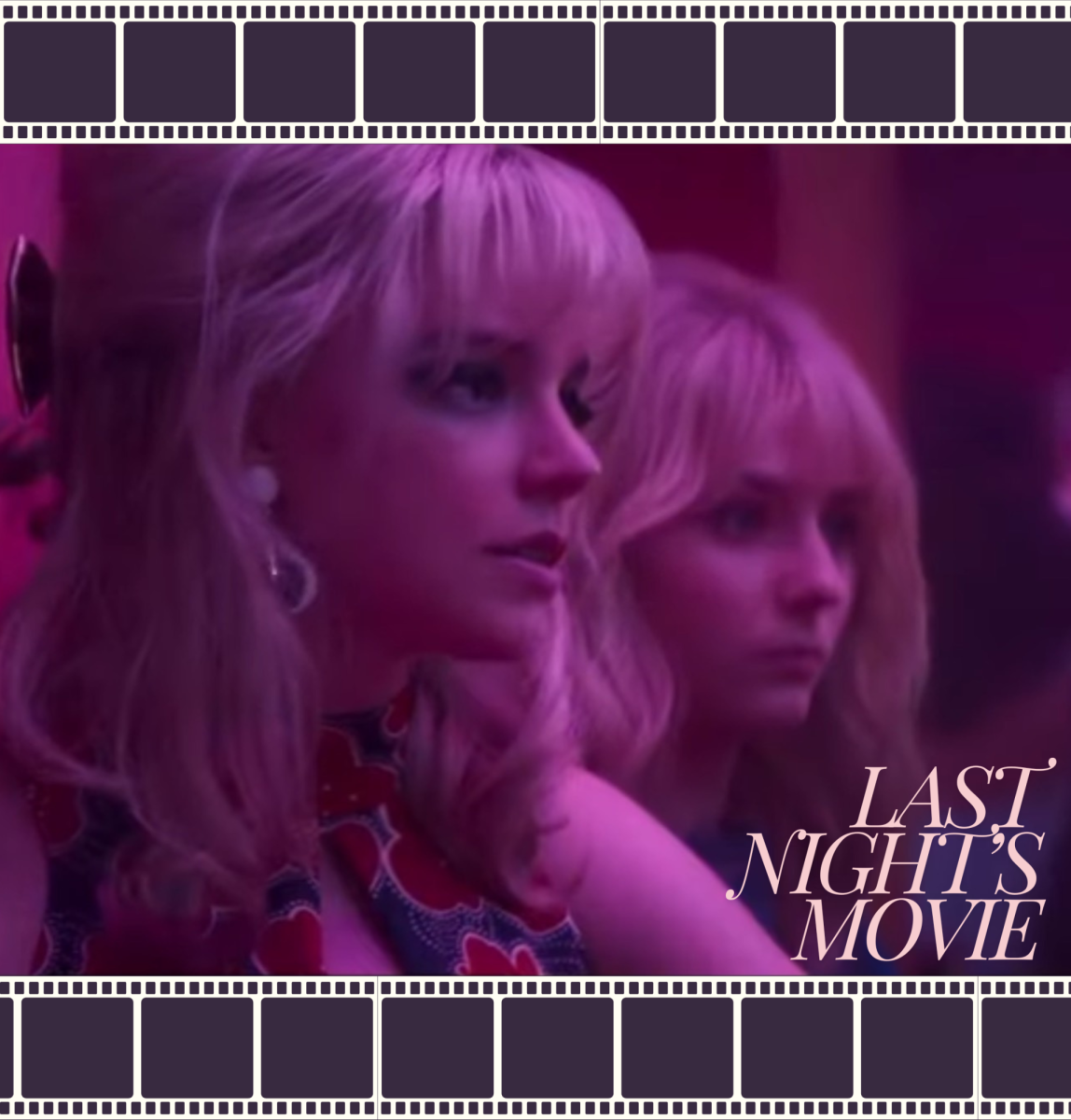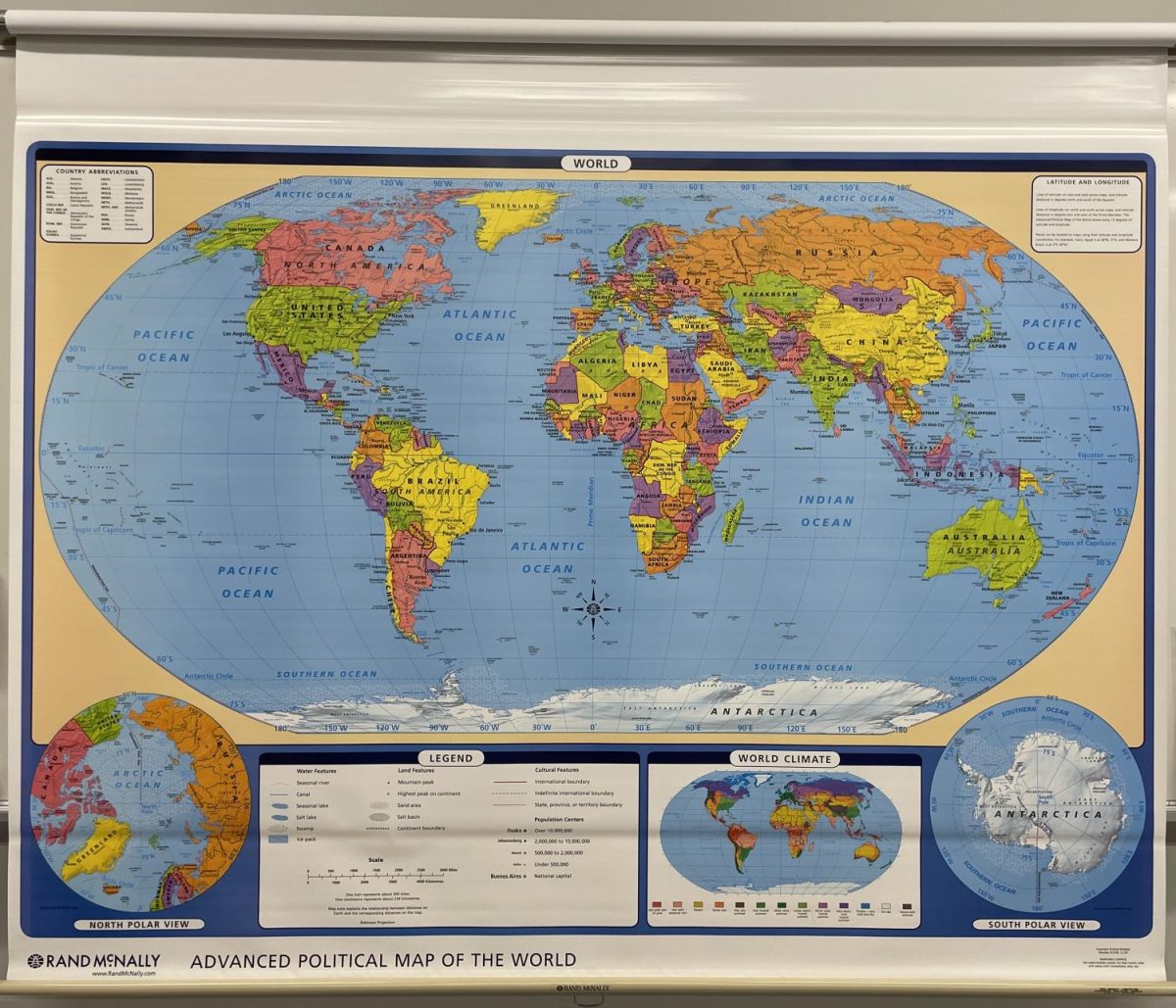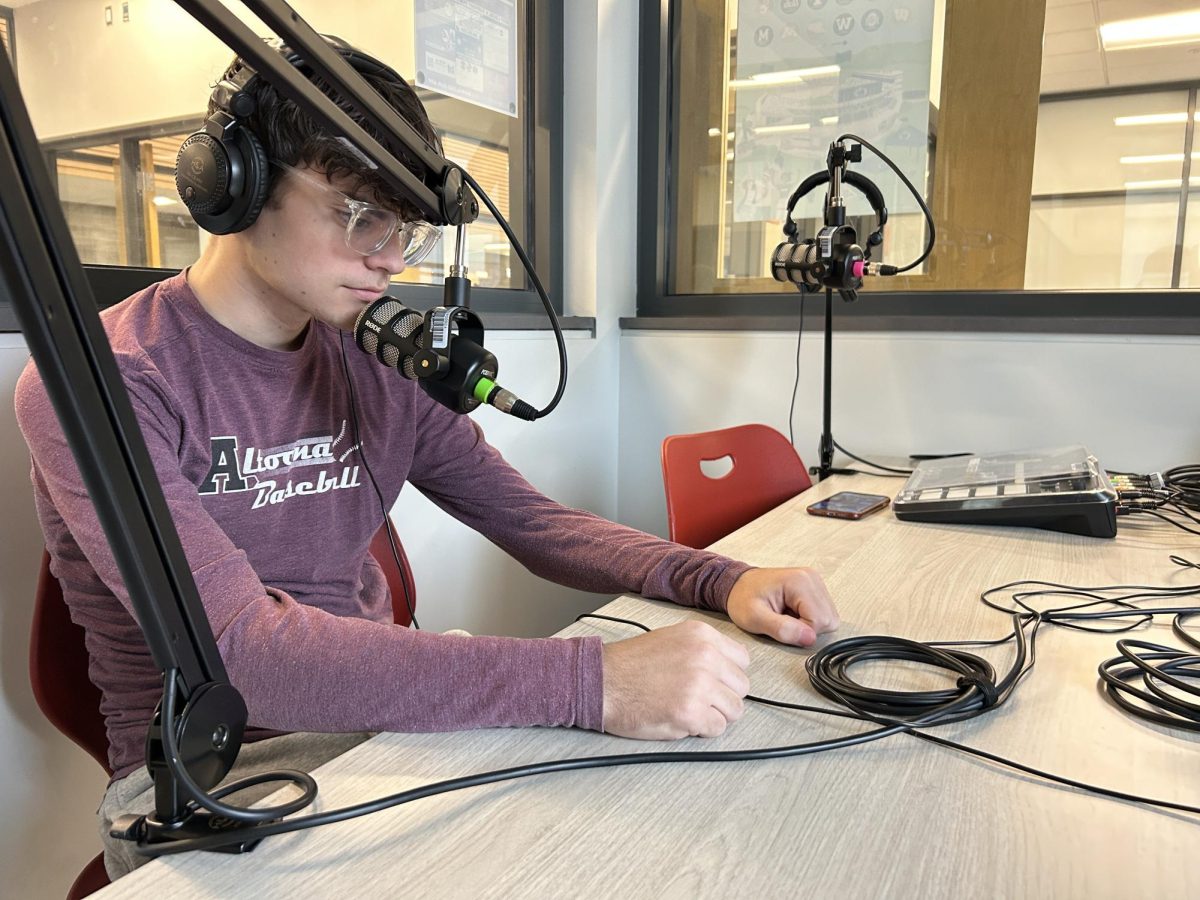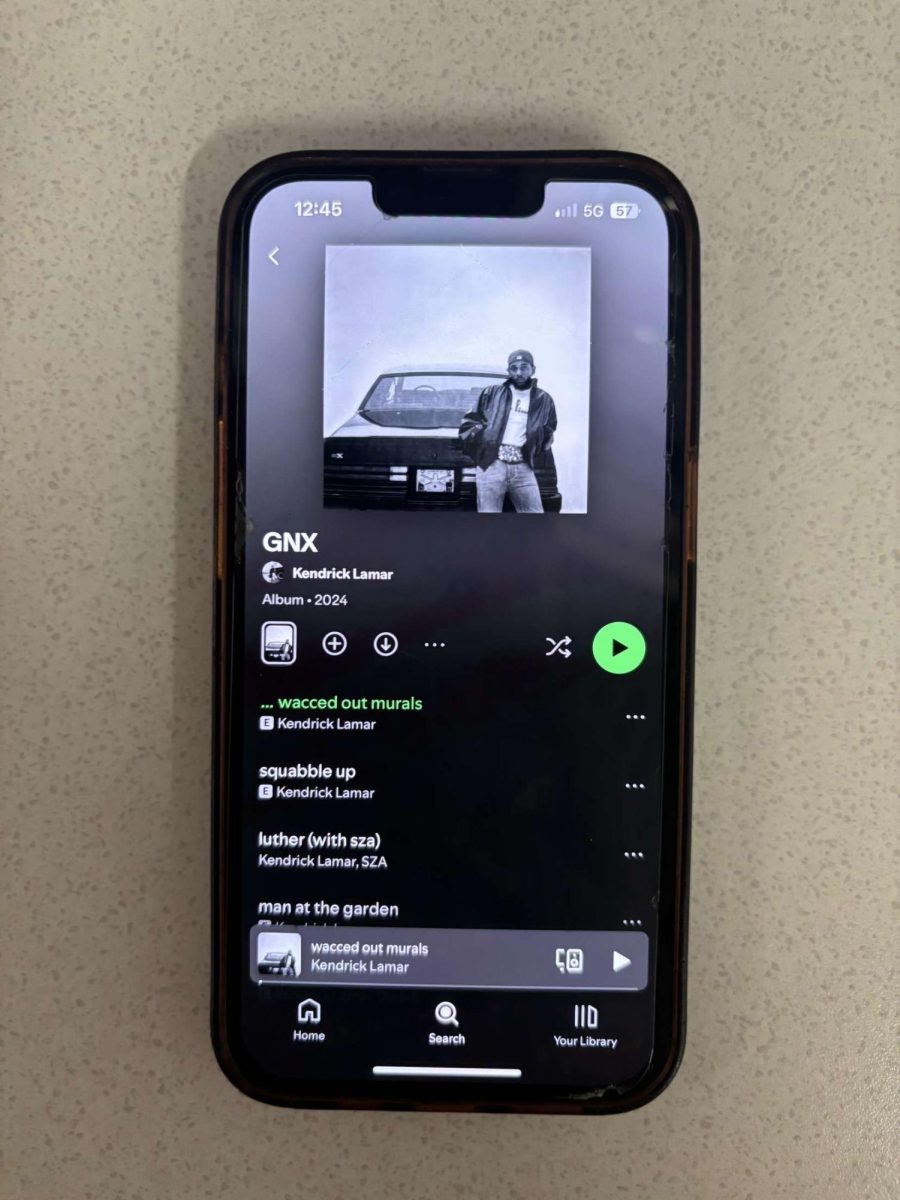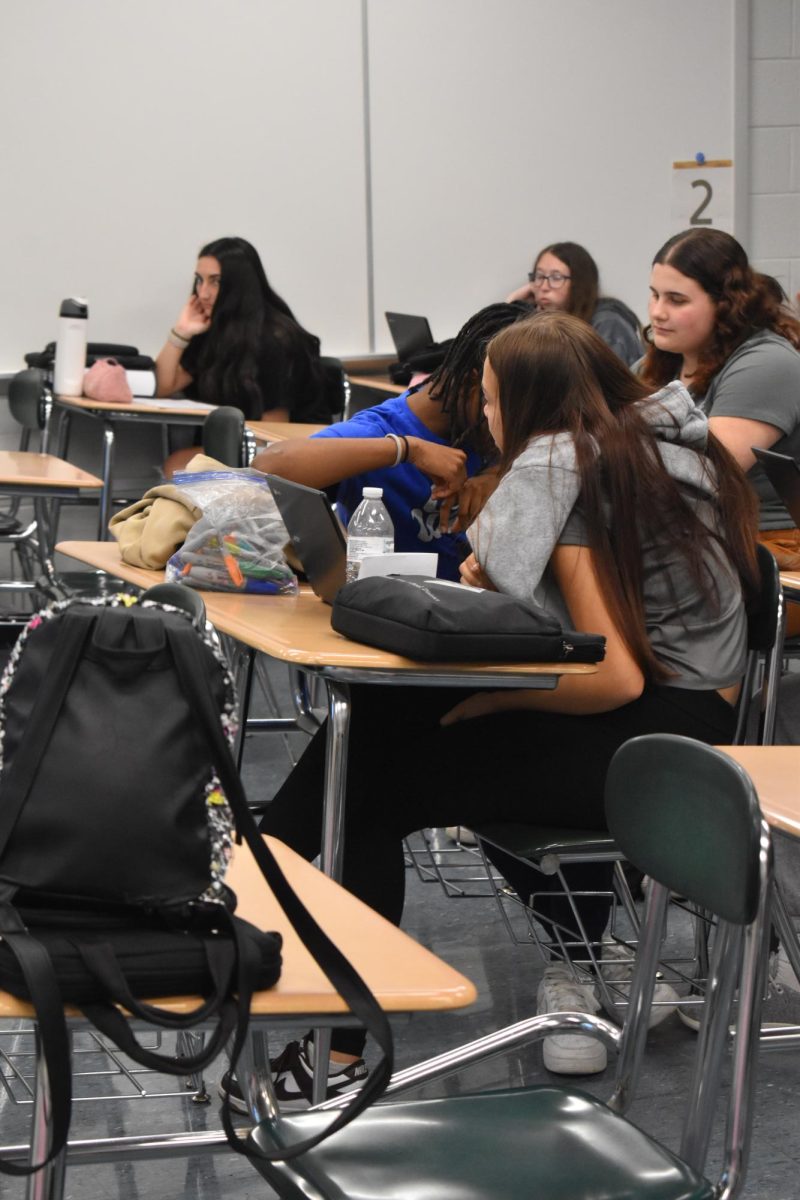Since its 2021 release, “Last Night in Soho” has received a seven out of 10 on IMDb, and a 75% on Rotten Tomatoes. Whether it deserves this review, however, is open to each viewer’s interpretation.
“Last Night in Soho” is categorized as a horror/mystery/thriller film, and is directed by Edgar Wright, who also directed the box office hit, “Baby Driver.” The film follows Eloise, a small town girl who pursues her dream of moving to London and attending fashion school. After a rough start in the city and unwelcoming dormmates, she rents out a room that seems stuck in the 1960s. Unfortunately, that is where the real trouble begins.
In our opinion, this thriller deserves a rating of eight out of 10.
The cinematography, specifically the use of and contrast between red, blue and purple lighting and the effects used to distort reality in certain scenes, stunned us. The atmosphere introduced by the characters, plot and direction made watching the movie a unique experience that left us thinking about it for hours afterward.
Though the whole movie had an excellent plot and kept viewers on their toes, in the latter half of the movie, the story and plot twists were fantastically executed. Everything that was set up early on, but left something to be desired, comes full circle, making what is intended to be clear clear, but still leaving some intentional gray area. The combination of powerful plot and consuming imagery had us glued to the screen and fully immersed in the story.
This movie clearly conveys many messages, the most prominent being that the entertainment industry isn’t all paparazzi and having one’s name in lights. While most cases are presumably not as severe as Eloise, it can be easily seen through cancel and call out culture that Eloise’s case isn’t as far off as it may seem.
There’s no question in our minds that “Last Night in Soho” deserves its stellar reviews, but what went wrong? There were a select few production choices that left a bad taste in our mouths during the film.
The first, and most overwhelming, was the character work in the earlier half of the movie. When Eloise arrives at the school dorms in London, she is immediately shunned by the other students for being the “innocent small town girl next door.” This stereotype wasn’t what bothered us the most about the whole interaction, though. In the beginning, she was relentlessly mocked by three “mean girls” for being a little weird. We found this entirely unrealistic, because at an art school everyone is weird; that’s why there are art schools. We also didn’t think that the immense level of stereotyping ended up adding anything to the story, it just made it feel tacky, cliche and uncreative.
Another issue we had was with the confusing timeline. For the first 15-ish minutes of the movie, Eloise seems to live in the mid to late sixties. Her walls are covered with posters displaying the pop culture of the time, her clothes reflect the trends and she listens to popular sixties bands exclusively on vinyl. Only when she begins her journey to London do her wireless Beats headphones giveaway that her story takes place in the present day. After this is established, the timeline of the story is also questionable. Whether the story takes place over a week, a month or a year is unknown. While this may have been a director’s choice to disorient the viewer, a common tactic used in psychological thriller films that plays with a person’s psyche, for us, it did little except pull us out of the film. We could live with the jumbled timeline while she was at school and in the depths of the plot because it felt natural for it to be anything but straightforward, simply showing the changing of the seasons could have added something that, after watching the movie, feels much needed. However, the obvious toying with the era at the beginning of the movie ended up feeling like a silly bit that had no place in a thriller.
Speaking of Eloise’s Beats headphones, the product placement in this movie is nothing shy of noticeable. Though it is at its most eye-catching early on in the movie’s duration, it can be easily guessed who had money in this movie. In every scene where Eloise listens to music through her headphones, the Beats logo stares through the screen, extra in focus. In a convenience store scene, the blurring of some products and clear shots of others stick out like a sore thumb. While it is understandable that these companies paid to have their product featured in the film, when placed in a scene with shifting focus on products, it gives an appearance that there was an issue with the cameras, or something else to that tune, adding to the tacky feeling created early on.
Thankfully, with the biggest of the issues out of the way, the rest of the movie was astounding. Thomasin McKenzie, who starred as Eloise, delivered a raw–and at times, intense–performance that left us feeling the aftermath of her character’s emotions. Anya Taylor-Joy (most known for her role in the Netflix series, “The Queen’s Gambit”) played another integral character in the film, and left nothing to be desired. Each character’s rage, fear and frustration was palpable throughout the story, right until the moment the credits rolled. There was no big, in-your-face cliffhanger ending, or a hopeless hint at a sequel, there were only the characters and the weight of another story over to remind us of what we’d seen.
This movie had purpose and direction; we didn’t just watch it to watch it. We watched it to experience it, to be enveloped in the world created by every single person involved. So, we recommend it to anyone who wants the same.


